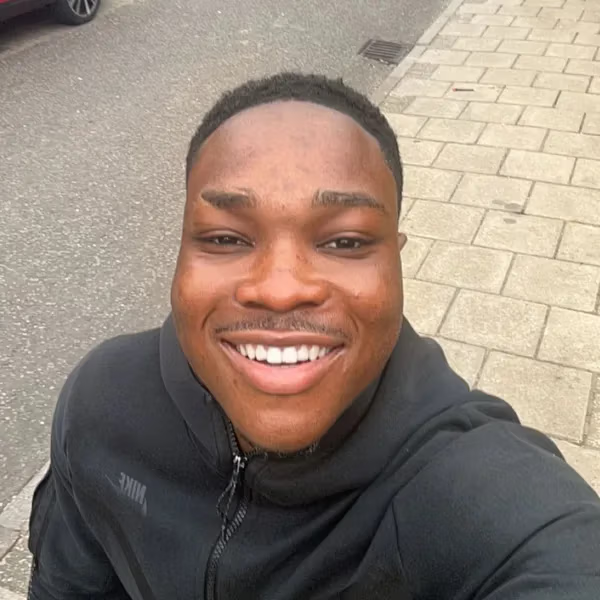Cupping Therapy
Cupping Therapy for Fast and Effective Pain Relief
Cupping Therapy In Bedford
At the Body Sage Clinic in Bedford, we use cupping therapy to help relieve muscle tension, ease pain, and improve how your body moves. It’s a technique that’s been around for centuries, but in our clinic, it’s backed by up-to-date knowledge of anatomy and clinical reasoning.
Cupping therapy works by creating suction on the skin, which lifts and separates the layers of muscle and fascia underneath. This can help reduce tightness, encourage blood flow to the area, and give your body a nudge in the right direction when it comes to healing. Whether you’re dealing with chronic tension, sports injuries, or just feeling stiff and sore, cupping can offer real relief.
Treatments are tailored to your needs and carried out by skilled therapists who know how to get results, without overdoing it. So if you’re curious about cupping therapy in Bedford, we’d be happy to help.
For cupping therapy in Bedford, book with The Body Sage Clinic and find out what all the fuss is about.
What is Cupping Therapy?
If you’ve ever seen someone with those circular marks on their back, chances are they’ve had cupping therapy – and no, it’s not as scary as it looks. At The Body Sage Clinic in Bedford, we’ve been using cupping therapy for 15 years to help people loosen up tight muscles, ease stubborn aches, and feel more like themselves again.
Cupping works by using an acrylic suction cup to lift the skin and underlying tissues, helping to release tension, lengthen muscles and stimulate blood flow. It’s especially effective for short, tight muscles and fascia that cause pain and reduce your range of motion, whether you’ve been training hard, stuck at a desk too long, or just feeling a bit out of sync.
FAQs
Still have questions? Call us for a quick chat.
What's the difference between the various types of cupping?
There are a few different ways to apply cups. Dry cupping uses suction alone, while wet or Hijama cupping involves small skin incisions to draw out a small amount of blood. Fire cupping uses heat to create suction, whereas myofascial cupping (what we do here) uses gentle vacuum cups to lift the skin and tissues without breaking the surface.
How old is cupping therapy?
Cupping is an ancient treatment that dates back thousands of years. It was practised in ancient Egypt, China, and the Middle East, with some of the earliest records found in Egyptian medical texts from around 1500 BC.
Is cupping therapy painful?
Cupping shouldn’t be painful. You’ll usually feel a firm, pulling sensation as the skin lifts under the cup, but most people find it relaxing. If it ever feels uncomfortable, the suction can be easily reduced.
Is this the same as Hijama Cupping?
Not quite. Hijama (or wet cupping) involves making small cuts to release a small amount of blood – it’s more traditional and done for different reasons. At The Body Sage Clinic, we only use dry myofascial cupping, which doesn’t pierce the skin and focuses on helping with muscle recovery, tightness, and mobility.
Is this the same as Fire Cupping?
The effects are similar, but the method is different. Fire cupping uses a flame to create the suction inside glass cups, while we use modern silicone or vacuum cups to safely control the pressure without heat or risk of burns.
Will cupping leave bruises?
Firm application of the cups can sometimes cause mild surface bruising, but this varies from person to person. Some people mark more easily than others, but these are not deep bruises like those caused by an impact and are rarely painful.
I've seen athletes at the Olympics with purple bruises, is this the same thing?
Yes! Those circular marks are from dry cupping – the same type of therapy we use. The marks show where the tissue has been lifted and circulation has increased, and they usually fade within a few days.
How long does the bruising last?
This will depend on how well your body clears a bruise and how firmly the cups are applied. They should clear faster than a bruise from an impact.
Does Cupping increase Range of Motion and flexibility?
It can help, yes. By improving blood flow and reducing muscle tightness, cupping can make the tissues feel looser and more comfortable to move. Many people notice better flexibility straight after a session.
Is there any scientific evidence to support cupping therapy?
Research into cupping is growing, and while studies show mixed results, many suggest that it can help with pain, muscle tension, and recovery. Most people find it a useful part of their treatment plan, especially alongside other hands-on therapy and movement work.
I read that cupping is pseudo-science.
It’s true that cupping’s traditional roots make it hard to study in the same way as modern medicine, so opinions differ. But many people experience clear benefits in terms of pain relief, mobility, and recovery. At The Body Sage Clinic, we use cupping as a practical, evidence-informed tool to support muscle health – not as a cure-all.
Meet The Sages

Trevor Hardwick
Trevor is a natural-born problem solver with 15 years of experience in the therapy industry and 30+ years in the health and fitness industry. Qualified in Sports Massage from Sports Therapy UK, and Dry-Needling Acupuncture from OMT Training.
Specialities: Injury Therapy, Dry-Needling Acupuncture, Cupping Therapy, GuaSha and Sports Performance Therapy.

Eli Nselala
Eli holds a Bachelor of Science with Honours in Sports Therapy and Rehabilitation from the University of Bedfordshire and is a CIMSPA-registered Personal Trainer, specialising in advanced manual therapy and rehabilitation.
Specialities: Injury Therapy Plus, Injury Therapy, Cupping Therapy, GuaSha and Sports Performance Therapy.
5-Star Google Rating
★★★★★
Open 7 Days A Week
Facebook Recommended
96%
Open Until 8pm Weekdays

